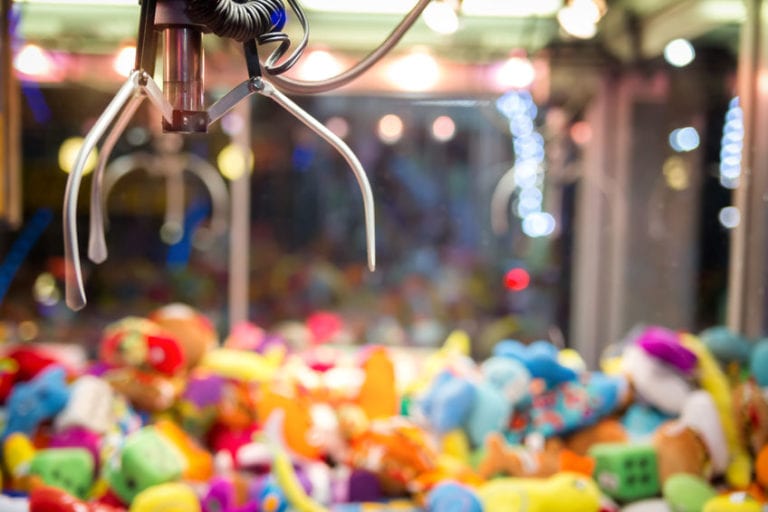
NEW YORK, NY—Observing that its fellows have a very challenging time using forceps, snares or loops to retrieve foreign objects from the esophagus and stomach, the GI department at Manhattan Medical Center (MMC) has discarded those ordinary retrieval tools and splurged on a surprising new piece of equipment: an arcade claw machine. The popular arcade game—the one with the large grasping claw used to attempt to pick up prizes—was seen as the ideal tool to grab ingested foreign material.
When a patient presents to MMC after swallowing something inedible, like coins, pens or batteries, the GI fellows take turns trying to recover the items using the big claw. “The key,” said 1st-year fellow Neil Morrison as he maneuvered the claw over a pile of coins sitting in the gastric antrum, “is to press the ‘Release’ button at just the right time, giving the claw the optimal chance to grab the desired object. Otherwise, you might just poke a hole in the stomach.” Oops!
“Or worse yet,” he continued as he withdrew the claw and pointed disgustedly at the retrieved coin, “you might only get a damn penny!” Out of change, Dr. Morrison had been hoping for a quarter, which would have been far more desirable since 25 cents must be inserted into the claw machine before each turn. “I already used up all my laundry money!” he said exasperatedly.
Despite its hefty operating cost, the endoscopic Claw has fast become a very popular procedure for these fellows, with the person ultimately recovering the object getting both bragging rights and the right to keep the object. Pulling a pen from his front pocket, Dr. Morrison boasted that not only did he recover this writing instrument from a patient, but he also won a bet that it would still work.
“Some might say we should return these objects to our patients,” said Dr. Morrison, as he pointed to a large display case in his office, full of retrieved items. “To them, I have 4 words to say: Finders keepers, losers weepers!”
At other times, though, the Claw can be very frustrating. “Ugh! I freaking had it,” screamed 3rd-year fellow Regina Hughes, as she dropped a size D battery while trying to squeeze it through the lower esophageal sphincter. Another time, she dropped a button in a Zenker’s diverticulum. “I was so close to getting it out! I swear these machines are rigged!”
Similarly, Dr. Morrison described a time he dropped a cigarette butt into the trachea when he was so close to getting it out. “Thank goodness,” he exclaimed, “the pulmonary fellows have a Bronchoscopic Claw and were able to fish it out!”